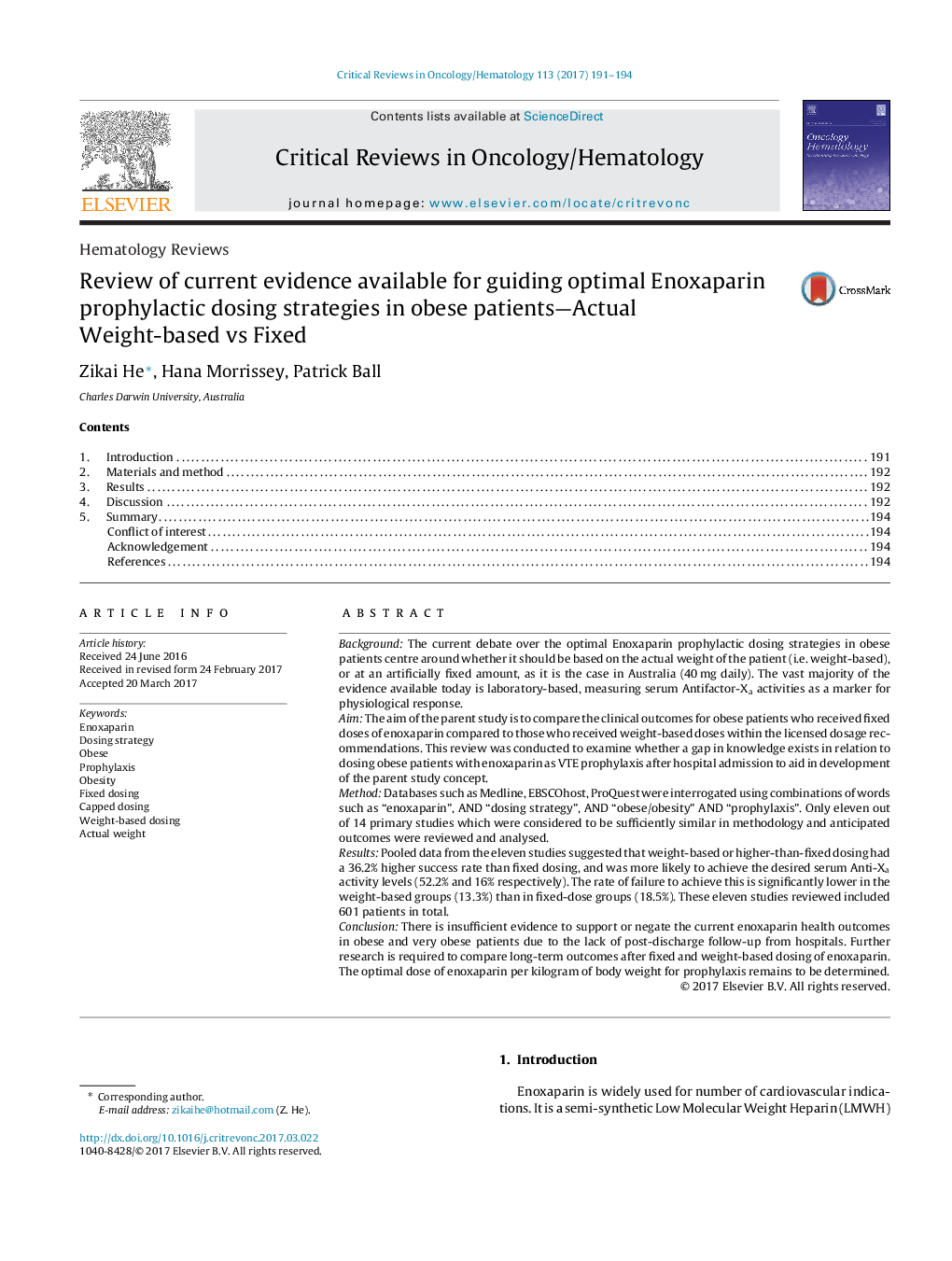| کد مقاله | کد نشریه | سال انتشار | مقاله انگلیسی | نسخه تمام متن |
|---|---|---|---|---|
| 5664087 | 1590704 | 2017 | 4 صفحه PDF | دانلود رایگان |
BackgroundThe current debate over the optimal Enoxaparin prophylactic dosing strategies in obese patients centre around whether it should be based on the actual weight of the patient (i.e. weight-based), or at an artificially fixed amount, as it is the case in Australia (40Â mg daily). The vast majority of the evidence available today is laboratory-based, measuring serum Antifactor-Xa activities as a marker for physiological response.AimThe aim of the parent study is to compare the clinical outcomes for obese patients who received fixed doses of enoxaparin compared to those who received weight-based doses within the licensed dosage recommendations. This review was conducted to examine whether a gap in knowledge exists in relation to dosing obese patients with enoxaparin as VTE prophylaxis after hospital admission to aid in development of the parent study concept.MethodDatabases such as Medline, EBSCOhost, ProQuest were interrogated using combinations of words such as “enoxaparin”, AND “dosing strategy”, AND “obese/obesity” AND “prophylaxis”. Only eleven out of 14 primary studies which were considered to be sufficiently similar in methodology and anticipated outcomes were reviewed and analysed.ResultsPooled data from the eleven studies suggested that weight-based or higher-than-fixed dosing had a 36.2% higher success rate than fixed dosing, and was more likely to achieve the desired serum Anti-Xa activity levels (52.2% and 16% respectively). The rate of failure to achieve this is significantly lower in the weight-based groups (13.3%) than in fixed-dose groups (18.5%). These eleven studies reviewed included 601 patients in total.ConclusionThere is insufficient evidence to support or negate the current enoxaparin health outcomes in obese and very obese patients due to the lack of post-discharge follow-up from hospitals. Further research is required to compare long-term outcomes after fixed and weight-based dosing of enoxaparin. The optimal dose of enoxaparin per kilogram of body weight for prophylaxis remains to be determined.
Journal: Critical Reviews in Oncology/Hematology - Volume 113, May 2017, Pages 191-194
